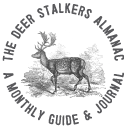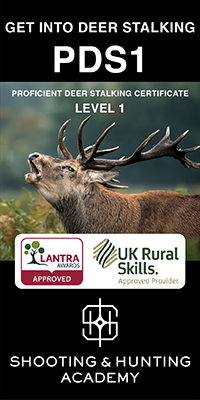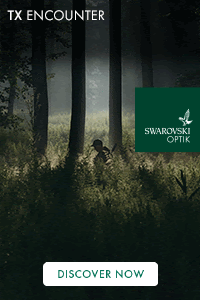Deer have many means of communicating and vocalizations are an important part of their repertory. The sounds made by deer are notable for their diversity, which range from the ‘doglike sounding’ barks of the Muntjac, to the eerie sounding high-pitched whistle of the Sika stag in the rut.
Very often during stalks when I draw attention to a deer call, the vast majority of clients are often very surprised to discover that what they are hearing is the sound of a deer. For many, the sounds heard in nature are not something they have considered or paid much attention to.
Research shows that deer (different for each species) use different sounds:
-
-
- to keep in contact with each other
- to express alarm and distress
- to solicit attention from and respond to does and fawns
- to express dominance/threaten other deer
- in the complex negotiations involved between the male and female in courtship and breeding
-
Undoubtedly the period from late September to November when the Sika, Red and Fallow rut is underway is the best time of year for the stalker to familiarise themselves with deer sounds. It is a trilling time of year to be out in the woods and the range of sounds transmitted from these deer species is extraordinary!! Finding yourself in close proximity with a rutting buck/stag (which I have on many occasions) could only be described as electrifying!!
Here’s a list of the 6 species found in the UK and the range of sounds each one makes.
Red Deer
STAG: The sound made by a red stag during the rut is very similar to the bellow of a bull but it usually ends with two or three coughing noises. It will give a loud warning bark if it senses danger and will grunt when worried by flies.
HIND: At the time of imminent birth the hind may make a sound which is very similar to that of the stag during the rut. She will communicate with her calf after its birth by bleating and occasionally with a warning bark when she returns to it.
CALF: The calf gives a high pitched bleat to its mother and will almost scream when really frightened although its usual defence is to freeze and keep silent.
Fallow Deer
BUCK: The sound of a rutting buck is like no other sound and cannot be mistaken. It is rather like a deep throated belch, often repeated for long periods of time and can be heard a great distance away.
DOE: The doe will bleat to its fawn and sometimes bark at the time of the rut and also when alarmed or disturbed.
FAWN: Bleats to its mother, and later in the year if pestered by bucks at rutting time.
Roe Deer
BUCK: Grunts when chasing a doe or a rival at rutting time. Gives gruff, short barks when alarmed which is repeated as it departs.
DOE: Calls to its kids with a peep-peeping sound. Makes a high pitched sound during the rut, which the buck responds to by searching for her.
KID: Gives a shrill bleat similar to that of a lamb.
Muntjac Deer
BUCK & DOE: Gives a dog like bark at four to five second intervals, often continuously for long periods (can be up to an hour). Also grunts and make clicking sounds. Has a piercing cry when distressed.
FAWN: Gives a bleating call to the doe
Sika Deer
STAG: During the rut the sika stag makes a wide range of sounds; from whistles and banshee like wails to screams and grunts, with long silences in between. Sika stags will also bleat or grunt to the hind.
HIND: Both stag and hind make a short sharp scream ending in a grunt when alarmed. She gives a similar call to her calf when guiding it through undergrowth.
CALF: Gives a bleating call to its mother.
Chinese Water Deer
BUCK: Makes a clicking, mechanical sound during the rut. Both sexes bark, particularly when alarmed. Both give a screaming wail when in distress.
DOE: Squeaks and whistles to her fawn.
FAWN: Gives a soft screaming cry.
Listen to Deer sounds of all 6 deer species found in the UK
County Deer Stalking offers superb Fallow, Sika and Red stag stalking in the rut this Autumn on numerous estates in the south east of England. Contact James Mott on 01403 790244 or email


















